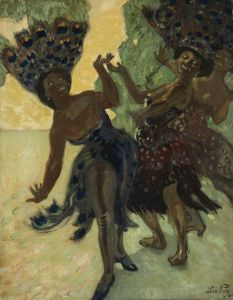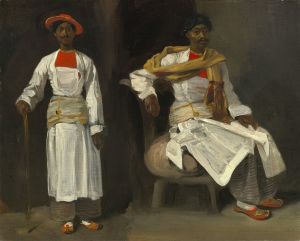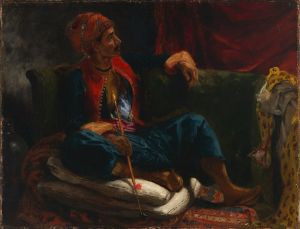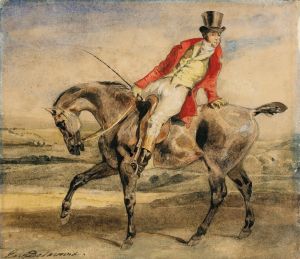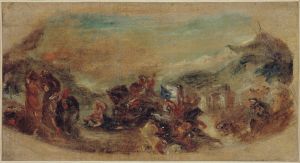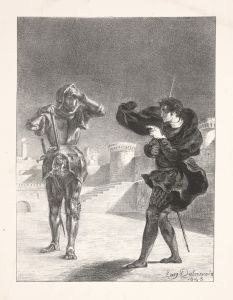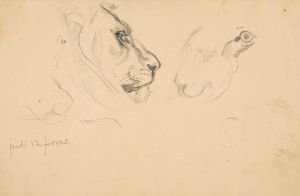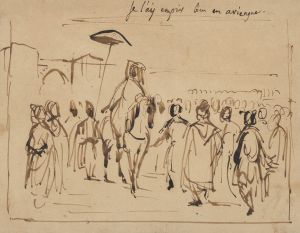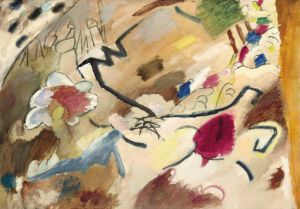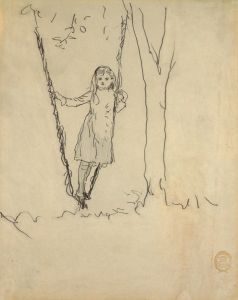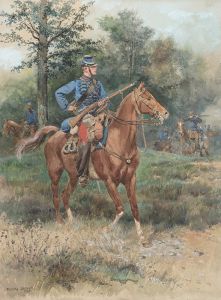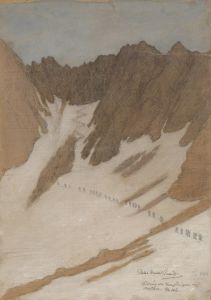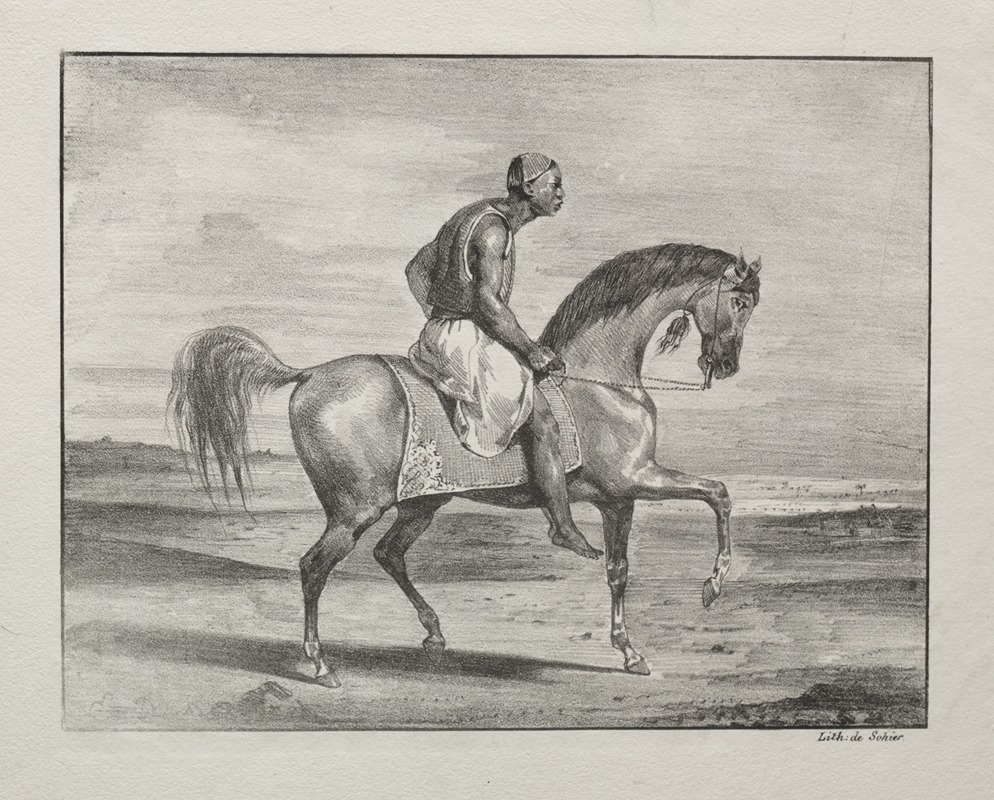
African on Horseback
A hand-painted replica of Eugène Delacroix’s masterpiece African on Horseback, meticulously crafted by professional artists to capture the true essence of the original. Each piece is created with museum-quality canvas and rare mineral pigments, carefully painted by experienced artists with delicate brushstrokes and rich, layered colors to perfectly recreate the texture of the original artwork. Unlike machine-printed reproductions, this hand-painted version brings the painting to life, infused with the artist’s emotions and skill in every stroke. Whether for personal collection or home decoration, it instantly elevates the artistic atmosphere of any space.
Eugène Delacroix, a leading figure of the French Romantic movement, is renowned for his vibrant use of color and expressive brushwork. One of his works, "African on Horseback," exemplifies his fascination with exotic subjects and his ability to capture dynamic movement and emotion. Delacroix's interest in North African themes was significantly influenced by his travels to Morocco in 1832, a journey that left a lasting impact on his artistic vision.
"African on Horseback" is a testament to Delacroix's ability to convey the vitality and spirit of his subjects. The painting depicts a solitary figure, an African rider, mounted on a horse. The composition is characterized by its dramatic use of color and light, which Delacroix employed to enhance the sense of movement and life. The rider, dressed in traditional attire, is portrayed with a sense of dignity and strength, reflecting Delacroix's admiration for the cultures he encountered during his travels.
Delacroix's technique in this painting is notable for its loose, expressive brushstrokes, a hallmark of his style that influenced later Impressionist artists. The use of bold colors and contrasts adds to the dynamic quality of the scene, capturing the viewer's attention and conveying a sense of immediacy. The background, though less detailed, serves to highlight the central figure, emphasizing the rider's presence and the power of the horse.
The painting is also significant for its cultural context. During the 19th century, European artists were increasingly interested in Orientalism, a term used to describe the depiction of Eastern cultures through a Western lens. Delacroix, however, sought to go beyond mere exoticism, aiming to portray his subjects with authenticity and respect. His works from this period, including "African on Horseback," reflect a genuine interest in and appreciation for the diversity and richness of North African life.
While the exact date of creation for "African on Horseback" is not definitively known, it is believed to have been painted after Delacroix's return from Morocco. This period marked a turning point in his career, as he began to incorporate more vivid colors and dynamic compositions into his work, inspired by the landscapes and people he encountered.
Delacroix's legacy as a pioneer of Romanticism is evident in his ability to evoke emotion and movement through his art. "African on Horseback" remains a compelling example of his skill in capturing the essence of his subjects, blending realism with a romantic sensibility. The painting continues to be appreciated for its artistic merit and its role in broadening the scope of 19th-century European art.
Overall, "African on Horseback" is a reflection of Delacroix's innovative approach to painting and his enduring fascination with the world beyond Europe. His work not only contributed to the Romantic movement but also paved the way for future generations of artists to explore new themes and techniques.





